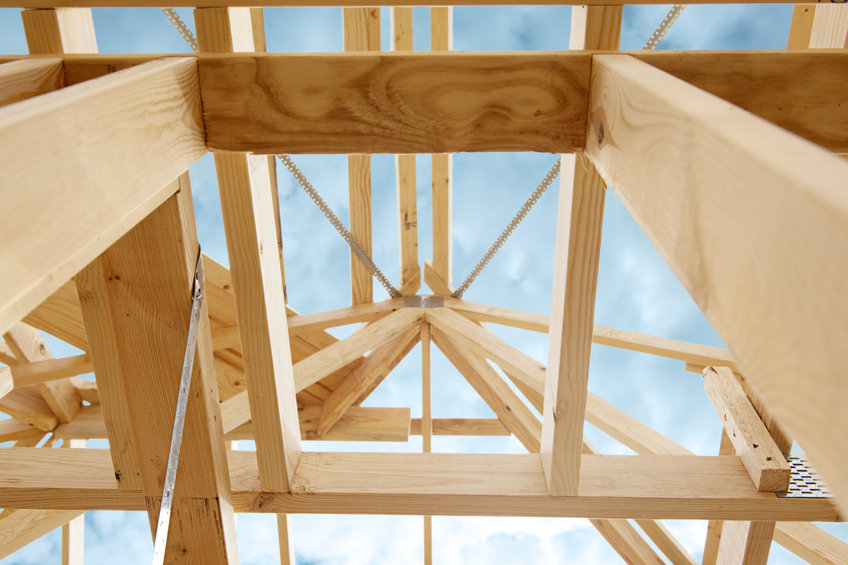The cost to build or improve a home since the start of the pandemic has skyrocketed because of the rising prices of lumber, and lumber prices haven’t settled after returning to pre-pandemic levels during Summer 2021. Futures contracts fell to $536 per thousand board feet of lumber as of July 16, 2021 — a 68% drop from the record-breaking high of $1,670.50 on May 7, 2021, according to The Wall Street Journal. The price as of Sept. 2, 2022, has returned to $485.50 per thousand board feet after its most recent high of $1,464.60 on March 3, 2022.
When states around the country began issuing stay-at-home orders in March 2020, many industry professionals were unsure of how long the pandemic would last or if the economy would slip into a recession. U.S. lumber companies started to scale back production so they wouldn’t be stuck with a glut of supply with little demand. This was one of a handful of causes that contributed to the high prices of lumber, according to Tim Morris, associate broker with HomeSmart and former homebuilder.
READ ALSO: How can Arizona keep up with increased construction labor demands?
“The biggest factor really comes down to prices going up because they can. There’s more demand than supply,” Morris comments. He adds that another issue that affected the supply involved the United States’ neighbor to the north. Canada’s lumber industry is subsidized by the government, meaning that Canadian companies can sell their product cheaper than their U.S. competitors. In retaliation, the U.S. government instituted antidumping rules that put tariffs on Canadian lumber when it crosses the border, which disincentivized trade between the two countries, though it still occurs.

“Because Canada had a stricter approach to COVID-19, a lot of the loggers went home and got paid more than they would risking their lives felling trees in the wilderness,” Morris says. “So, the Canadian supply evaporated, and then demand went crazy.”
With many Americans stuck inside, home improvements became an attractive way to pass the time.
“The volume of lumber bought at Home Depot went through the ceiling until [summer 2021]. Suddenly, a piece of plywood was $100, while it was $17 in April 2020,” Morris continues.
FUTURE LUMBER PRICES
Like many other commodities, such as corn or wheat, lumber is bought and sold with futures contracts.
“The lumber that’s going to be produced next March is already sold to somebody on a futures contract. Some investor is buying it in hopes that they’re going to get an uptick,” Morris explains.
Homebuilders typically get lumber pricing from a framing contractor, who got the information from a lumberyard, which priced a train car of product based on a middleman’s contract with futures holders.
Tom Nun, owner of Horizon Commercial Contracting, has seen his business affected by price uncertainty. “Our clients need to have a firm idea of what their costs are going to be so they can calculate their return on investment and see if a project makes sense. With moving prices, it’s a tightrope to walk because we have some limitations from the lumber suppliers on how long they’re willing to hold the price that they float,” he says.
According to Morris, wild cost swings affect profitability. “In April 2020, I was building in Casa Grande and was paying $31,718 for the framing. [In summer 2021], that same job cost $80,357. And there’s been three-month periods where prices vacillated as much as $25,000. That’s more than the whole margin in the house.”

Nun says he’s heard from subcontractors that they’re getting five-day quotes for plywood and oriented strand board (OSB). “That becomes difficult on my end to provide an estimate to one of my clients to make a decision. Then I have to contract and order the product within five days. It becomes difficult for anybody to respond to those kind of time limits,” he notes.
Lumber prices have started to slide downwards, but it’s going to take time for the end user to see those savings. “It’s like gasoline at the pump,” Morris explains. “People hear about a pipeline breaking and gas at the pump goes up 50 cents per gallon. Then we find out it really didn’t break, but it takes two months for it to finally get back down to where it was.”
Nun agrees, adding that a decrease in demand or increase of supply will need to continue for some time before price reductions happen further down the pipeline. “Futures will come down because investors recognize that production will come back up. But the demand is still there, so there’s no compelling reason for producers to drop prices until they finally see a reduction in orders. And right now, they’re selling everything they can produce,” he says. “There has to be a drop in demand or a big increase in supply before prices start to really come down at our level.”
Morris concludes, “Everybody has seen articles saying lumber prices are falling 49% or more and think that affects their ability to acquire a new home. It’s completely disconnected. The only place you see that is in The Wall Street Journal. The volatility of that market is creating the need for everybody to understand that the buyer is the one who’s going to be at risk.”
Editor’s note: This article was originally published July 2021.




